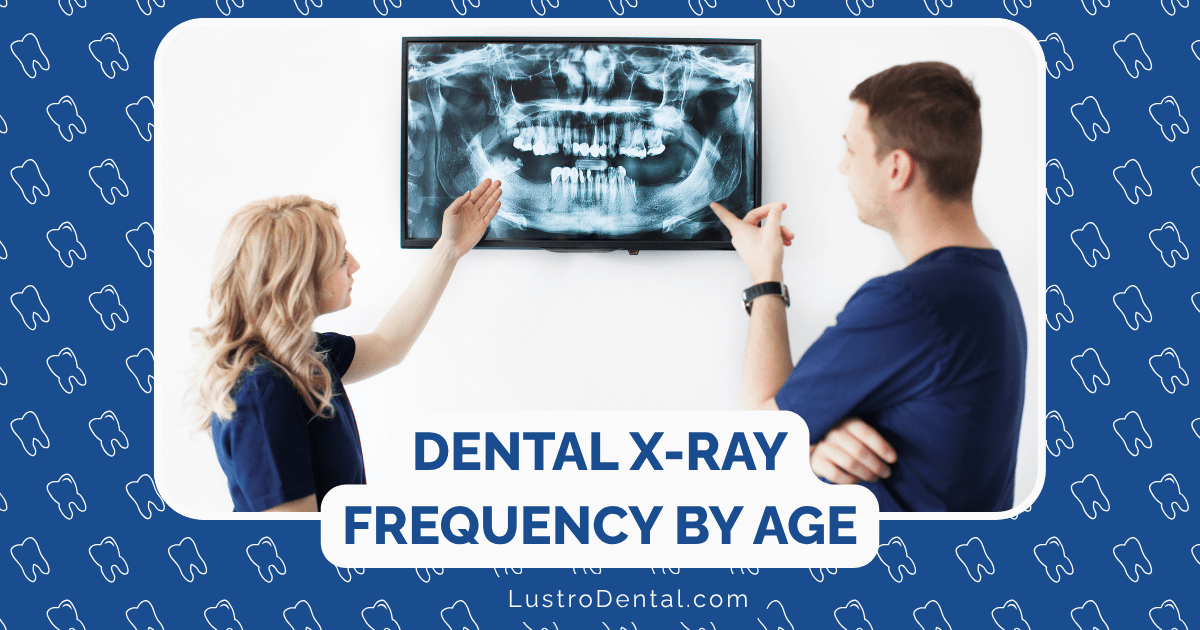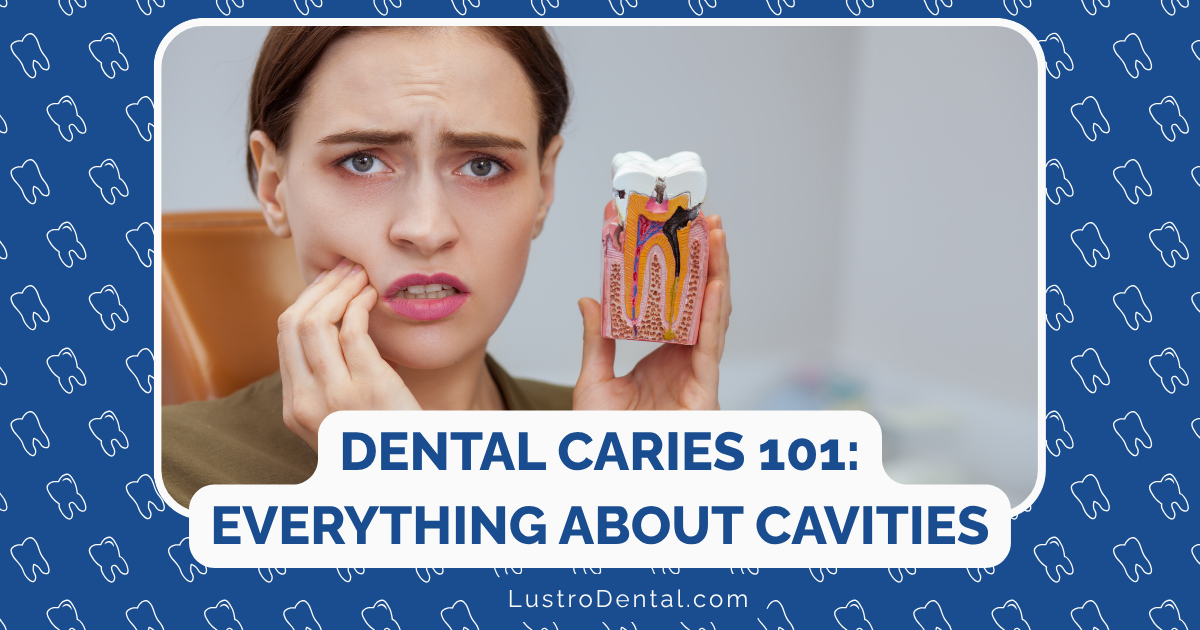How Often Should You Really Get Dental X-rays? Age-Based Guidelines

“Do I really need X-rays today?” This is one of the most common questions I hear from patients in the dental chair. It’s a fair question—after all, most people are naturally concerned about radiation exposure and want to ensure any diagnostic procedure is truly necessary.
The answer isn’t as simple as you might think. Despite what many believe, there’s no one-size-fits-all schedule for dental X-rays. The American Dental Association (ADA) emphasizes that X-rays should be prescribed based on individual patient needs rather than arbitrary timelines.
In this evidence-based guide, I’ll break down the current recommendations for dental X-ray frequency by age group, explain the risk factors that might increase or decrease your need for X-rays, and address common concerns about radiation exposure.
Understanding the Purpose of Dental X-rays
Before diving into frequency guidelines, it’s important to understand what dental X-rays reveal that a visual examination cannot:
- Cavities between teeth (interproximal decay)
- Bone loss from periodontal disease
- Infections at the root tip or in the bone
- Developmental abnormalities
- Cysts, tumors, and other pathologies
- Position of unerupted teeth
- Residual root fragments
According to the University of Michigan School of Dentistry, these insights are crucial for early detection and treatment of conditions that might otherwise go unnoticed until they become serious problems.
Age-Based Guidelines: A Starting Point
While individual factors ultimately determine X-ray frequency, age-based guidelines provide a useful starting point. Here’s what current research and professional organizations recommend:
Children (Ages 0-12)
Children’s dental X-ray needs change rapidly as they grow and their dentition develops.
Early Childhood (0-3 years)
For very young children, X-rays are typically not needed unless there’s a specific concern. According to Delta Dental, X-rays generally aren’t recommended until teeth begin touching each other—usually around age 4-6.
Typical recommendation: X-rays only when clinically indicated by visual examination.
Primary Dentition (3-6 years)
As children’s baby teeth come into contact with each other, the risk of interproximal cavities increases.
Typical recommendation for low-risk children: Bitewing X-rays every 12-24 months. Typical recommendation for high-risk children: Bitewing X-rays every 6-12 months.
Mixed Dentition (6-12 years)
This is a critical period when baby teeth are being replaced by permanent teeth. X-rays help monitor this process and check for developmental issues.
Typical recommendation for low-risk children: Bitewing X-rays every 12-24 months; panoramic X-ray around age 7 to assess development. Typical recommendation for high-risk children: Bitewing X-rays every 6 months; additional X-rays as indicated.
Research published in PMC notes that the most common indication for X-rays in children is trauma (28.7%), followed by caries diagnostics (22.7%). The study also found that boys received nearly 60% of all intraoral radiographs, particularly for trauma cases.
Adolescents (Ages 13-17)
Teenagers face unique oral health challenges, including a higher risk of decay due to dietary habits and sometimes less-than-ideal oral hygiene.
Typical recommendation for low-risk adolescents: Bitewing X-rays every 18-36 months. Typical recommendation for high-risk adolescents: Bitewing X-rays every 6-12 months.
Additionally, many adolescents need orthodontic evaluations, which typically include panoramic and cephalometric X-rays. According to the ADA, these specialized X-rays are usually taken once during orthodontic planning rather than on a recurring schedule.
Adults (Ages 18-64)
For adults, X-ray frequency depends heavily on oral health status and risk factors.
Typical recommendation for low-risk adults: Bitewing X-rays every 24-36 months; full mouth series every 5 years. Typical recommendation for high-risk adults: Bitewing X-rays every 6-18 months; full mouth series every 3 years.
According to CDEPA Dental Group, healthy adults generally require bitewing X-rays every 12-18 months, with a full mouth series recommended every 3-5 years.
Seniors (Ages 65+)
Older adults often face unique oral health challenges that may necessitate more frequent monitoring.
Typical recommendation for low-risk seniors: Bitewing X-rays every 24-36 months; full mouth series every 5 years. Typical recommendation for high-risk seniors: Bitewing X-rays every 6-12 months; full mouth series every 3 years.
According to TerraBella Senior Living, seniors with good oral health and no significant risk factors may only need dental X-rays every 18-24 months. However, many seniors require more frequent imaging due to increased risk of root decay, bone loss, and other age-related oral health issues.
Understanding Risk Factors: What Makes You “High Risk”?
The frequency recommendations above depend on whether a patient is considered “high risk” or “low risk.” But what exactly determines this classification?
High-Risk Factors
According to the ADA and clinical research, the following factors may place you in a higher risk category:
Oral Health Factors:
- Active dental decay within the past 3 years
- Multiple existing restorations (fillings, crowns, etc.)
- Deep pits and fissures in teeth
- Visible plaque and poor oral hygiene
- History of periodontal (gum) disease
- Exposed root surfaces
- Irregular dental care (infrequent visits)
Medical Factors:
- Dry mouth (xerostomia), which can be caused by medications or medical conditions
- Immunocompromised status
- Head and neck radiation therapy
- Chemotherapy
- Eating disorders
- Gastroesophageal reflux disease (GERD)
Lifestyle Factors:
- High-sugar diet
- Frequent snacking
- Recreational drug use
- Tobacco use
- Excessive alcohol consumption
Low-Risk Factors
Conversely, you might be considered low-risk if you have:
- No history of cavities in the past 3+ years
- Excellent oral hygiene
- Regular dental visits
- Minimal existing dental work
- Healthy diet low in sugars and acids
- No medical conditions affecting oral health
Special Considerations for Different Age Groups
Beyond the basic frequency guidelines, certain age-specific considerations influence X-ray recommendations:
Children: Balancing Development and Safety
Children are more sensitive to radiation than adults due to:
- Rapidly dividing cells
- Longer life expectancy (more time for potential effects to manifest)
- Smaller body size (radiation affects a greater proportion of the body)
According to research published in PMC, the risk of cancer development from low-dose radiation exposure is estimated to be higher in female children compared to males. This is why the Image Gently Alliance promotes “child-size” radiographic examinations to minimize radiation exposure in pediatric patients.
For children, dentists should:
- Use the smallest possible X-ray field size
- Use the fastest image receptors available
- Use rectangular collimation when possible
- Adjust exposure settings specifically for children
Adolescents: Monitoring Development and Decay
Adolescence brings specific challenges:
- Eruption of wisdom teeth
- Higher risk of decay due to dietary habits
- Potential orthodontic needs
- Sometimes less-than-ideal oral hygiene
X-rays during this period often focus on monitoring third molar (wisdom tooth) development and checking for decay in hard-to-see areas.
Adults: Work and Life Factors
For adults, life circumstances can significantly impact X-ray needs:
- Job changes affecting dental insurance
- Pregnancy (special considerations for timing of X-rays)
- Stress-related conditions like bruxism (teeth grinding)
- Lifestyle changes affecting oral health
Seniors: Age-Related Concerns
Older adults face unique challenges that may necessitate more frequent imaging:
- Increased risk of root decay
- Bone density changes
- Dry mouth from medications
- Higher prevalence of periodontal disease
- Potential for oral cancer
Modern X-ray Technology: Safer Than Ever
Many patients’ concerns about X-ray frequency stem from radiation exposure fears. However, modern dental X-ray technology has dramatically reduced radiation doses.
Digital vs. Traditional X-rays
According to Brookhaven Dental Associates, digital X-rays reduce radiation exposure by up to 90% compared to traditional film X-rays. The Cleveland Clinic confirms that digital dental X-rays use 80% to 90% less radiation compared to traditional dental X-ray machines.
Putting Radiation Exposure in Perspective
To put dental X-ray radiation in context, consider these comparisons from the University of Michigan School of Dentistry:
- 4 Bitewings: 10 µSv (equivalent to 1 day of natural background radiation)
- Full mouth series: 35 µSv (approximately 4 days of background radiation)
- Panoramic X-ray: 24 µSv (3 days of background radiation)
By comparison, a cross-country flight exposes you to about 40 µSv of cosmic radiation—more than a full set of digital dental X-rays.
Making Informed Decisions: Questions to Ask Your Dentist
The ADA emphasizes the importance of the dentist-patient discussion in determining appropriate X-ray frequency. Here are questions to ask your dental provider:
- Based on my age and risk factors, what X-rays do you recommend and why?
- How do these X-rays complement what you can see in a visual examination?
- What specific conditions are you looking for with these X-rays?
- Do you use digital X-ray technology?
- What safety measures do you take to minimize radiation exposure?
- How often should I expect to need these types of X-rays in the future?
Conclusion: Personalized Care Is Key
While age-based guidelines provide a useful framework, the most appropriate X-ray frequency for you depends on your individual risk factors, oral health history, and current dental status. The goal is always to maximize diagnostic benefit while minimizing radiation exposure—a principle known as ALARA (As Low As Reasonably Achievable).
By understanding the guidelines and having informed conversations with your dental provider, you can ensure you’re receiving the right level of care—not too many X-rays, but not too few either. Remember that early detection through appropriate imaging can save you from more extensive and expensive dental work down the road.
Your dentist should be able to clearly explain why specific X-rays are being recommended and how they’ll benefit your oral health. If you have concerns about X-ray frequency, don’t hesitate to ask questions—a good dental provider will welcome the opportunity to discuss your care plan and address your concerns.







